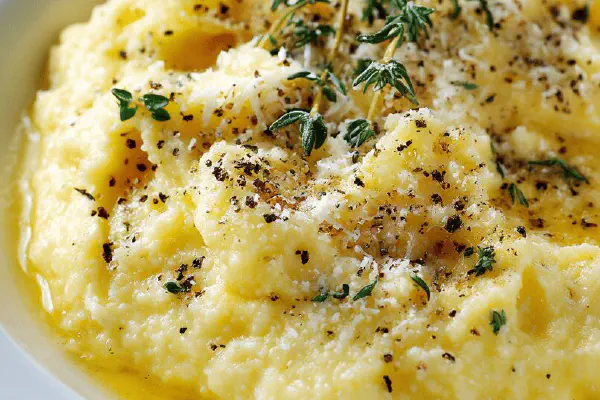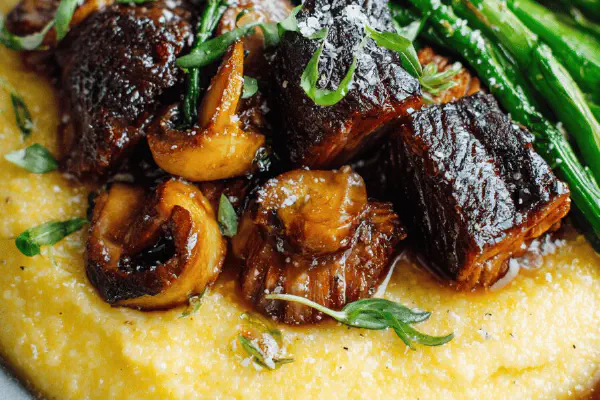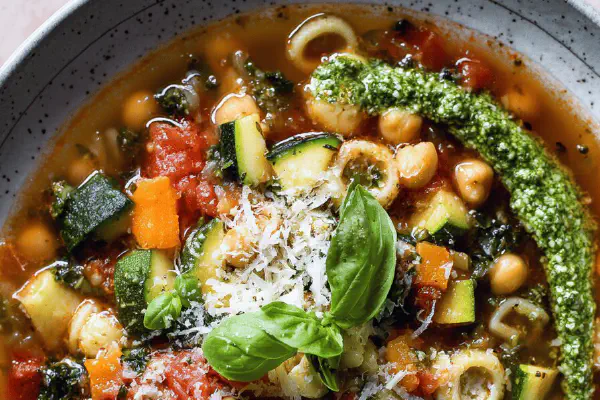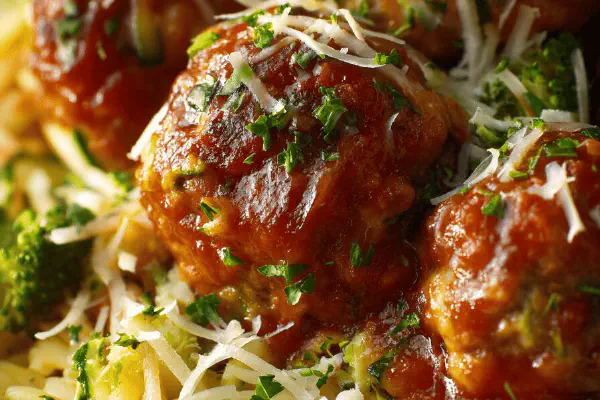Quick Polenta with Taleggio

By Emma
Certified Culinary Professional
Ingredients
- 2 cloves garlic minced
- 30 ml (2 tbsp) olive oil
- 900 ml (3 ¾ cups) vegetable broth
- 130 g (¾ cup plus 2 tbsp) quick-cooking polenta
- 110 g (4 oz) Taleggio cheese peeled and cubed
- 1 pinch ground nutmeg
- 1 tsp fresh thyme minced
- Salt and freshly ground black pepper
About the ingredients
Method
- Heat olive oil in medium saucepan over medium heat. When shimmering, toss in garlic. Watch closely, stir as soon as aroma hits; soften until golden but not burnt—about 1 to 2 minutes.
- Pour in vegetable broth, increase heat till bubbling. Off you go—slowly sprinkle polenta in while whisking vigorously to prevent clumps. Listen as polenta thickens, a quieter bubbling indicates it’s near done.
- Reduce heat to low. Simmer gently, stirring constantly to keep it creamy and lump-free. Usually 12-15 minutes at least. Too thick? Splash in more broth—don’t let it glue up.
- Off fire, fold in Taleggio cubes. Mix until cheese melts, that stringy pull signals good melt. Stir in fresh thyme, salt if needed, plenty of black pepper. Nutmeg pinch for warmth.
- Serve immediately. Texture should be dense but soft, cut with spoon easily. If it firms too fast, loosen with broth. Robust enough for rich sides; pairs well with braised greens or bold sausages.
Cooking tips
Chef's notes
- 💡 Garlic toasted gently in olive oil releases aroma without burning. Keep heat moderate, stir early once scent hits. Burn garlic, whole dish suffers bitter turn. Off heat butter works to boost aroma if you want richer touch.
- 💡 Add polenta slowly, whisk like crazy to prevent lumps. Bubbling changes guide doneness—rolling boil to gentle simmer with sparse bubbles means thickening. Listen and watch, trust texture more than timer. If too thick, splash vegetable broth to loosen, keep creamy consistency.
- 💡 Simmer long enough for polenta to soften but not glue up. Too sticky means under-watered or overcooked. Constant stirring key to avoid scorched spots on pan bottom. Use heavy pan for heat control; silicone whisk makes folding cheese easier without breaking curds.
- 💡 Add Taleggio off heat, fold gently for that stringy melt. Cheese melts differently than parm or fontina—more punch, sharper tang. If no Taleggio, try mozzarella plus soft washed rind mix but expect milder taste and melt. Salt after cheese joins to avoid over-salting broth base.
- 💡 Fresh thyme added after cheese melts preserves that herbal brightness. Dried thyme earlier, less potent and changes flavor profile. Nutmeg pinch final step adds warmth. Don’t overdo or it smothers. For smoky note, bonus: teaspoon smoked paprika into broth or polenta while cooking.
Common questions
What if polenta lumps form?
Whisk while adding polenta slowly. If lumps still, pass mixture through fine sieve or blend briefly. Heavy pan helps prevent hot spots that cause clumps. No whisk? Stir nonstop with fork, but whisk better.
Can I replace vegetable broth?
Sure, chicken broth swaps smoothly but salt adjusts needed. Water works if well-seasoned, but less depth. Vegan means no cheese—nutritional yeast with cashew cream imitates melt, flavor changes big, texture shifts too.
How to store leftovers?
Polenta firms fast in fridge. Reheat with warm broth or water, stir till loose again. Can firm and slice cold for frying next day. Don’t dry out in storage; keep sealed container, add moisture when reheating.
Garlic burnt? How fix?
Bitterness ruins base aroma—start fresh oil batch, lower heat early. Add garlic once oil softly shimmering. No rescue once charred. Use fresh minced garlic, not pre-crushed powders for best flavor release.



